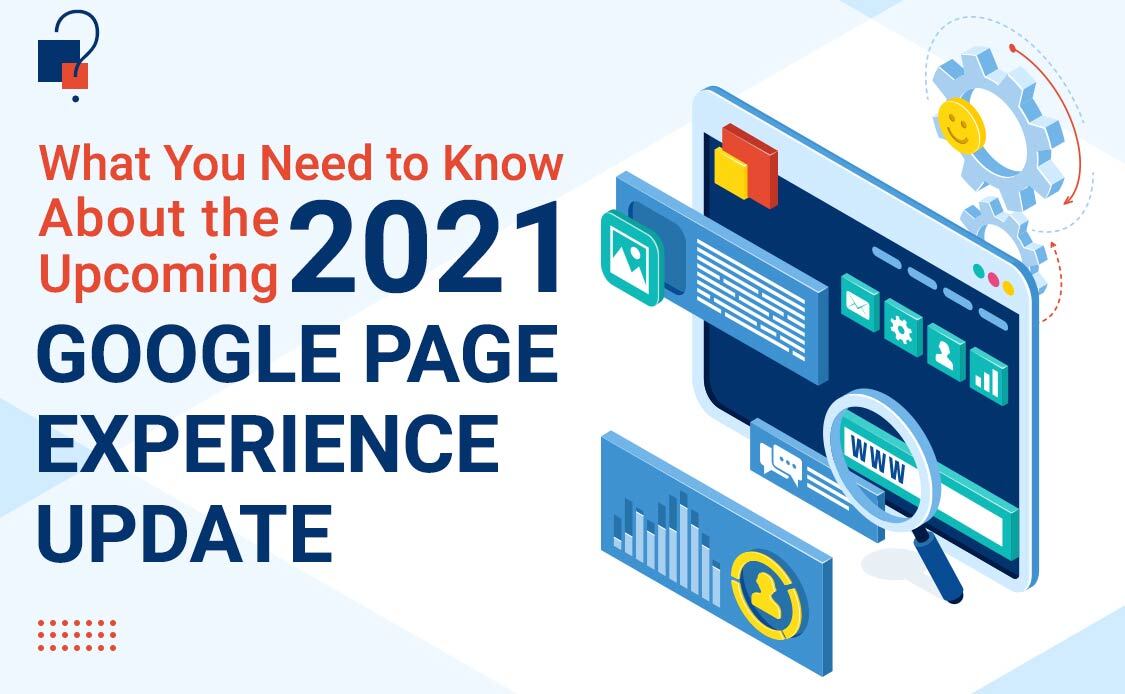


In November 2020, Google officially announced that their Page Experience Update would roll out in May 2021. In making this announcement, Google gave us a six-month heads up to start anticipating these changes in how Google will “see” websites going forward. Is your website primed and ready to meet these page experience standards?
Google also disclosed that they would test a visual indicator that highlights the webpages which are delivering a great UI and UX. Need to get your website prepared for the update? The Google Search Console is an excellent place to start. There you can check how your website is performing in terms of all the key Core Web Vitals factors. Not familiar with Core Web Vitals? You can learn more about them in this helpful.
The landing page is the webpage people actually arrive upon after clicking on your ad, organic search result, or any other link source. Simply put, landing page experience describes how well your website is able to provide people what they’re looking for. And your ads or links will start to display less often if they point to a landing page that offers a poor page experience for users.
Google will evaluate how user- and customer-friendly your landing page is based upon a set of pre-determined page experience signals. These signals include how quickly your page loads, mobile-friendliness, browsing safety, and other factors. What Google learns about the usability and speed of websites like yours will also be used to help Google continue to refine its metrics around Core Web Vitals and the user’s landing page experience.
Google doesn’t reveal too many details about their algorithm updates; they keep this information highly guarded. But if you want to see your site rank in a top position, you definitely need to optimize your website for the Page Experience Update. As mentioned above, you can start by working on the Core Web Vitals for your site. You can find the Core Web Vitals option under the enhancements area of your Google Search Console account. Here, you can check how your webpages are performing in regard to Cumulative Layout Shift (CLS), Largest Contentful Paint (LCP), and First Input Delay (FID). We’ll say more about those more later, but a good place to begin is in CLS. Take the time to resize your images according to the target screen resolution. You should then see about compressing your images. Choosing to take advantage of a content delivery network (CDN) can also serve to significantly reduce the load time for your page.
To plan for these coming metrics for page experience evaluation, it’s important to take advantage of the right tools to help maximize your page experience. It’s wise to begin by implementing a site-wide audit of your pages to see where there may be opportunities for improvement. Check the search console report for Core Web Vitals to see an overview of how your web page is performing; then you’ll be better informed in terms of where you might need to dive a little deeper.
Google Page Speed Insights can be utilized to diagnose how fast your website is loading. If you really want your website rank highly for search engine results, one of the most critical elements to shore up is how fast your website loads. Google says that if your website loads slowly, it simply isn’t giving your users what they want and need. As a result, Google will push your site further down the search engine results page if your site doesn’t load quickly.
The Lighthouse is an open-source automated tool for measuring webpage quality and site performance. You can use this tool to audit your website for both accessibility and search engine optimization. You can even print out the full audit report with a single click. The Lighthouse report provides you with website scores in several categories on a scale of 100. The performance areas checked include Accessibility, SEO, Performance, Best Practices, and Progressive Web App.
In the Google Search Console, you can check all the technical details for your website, and be able to identify any crawling issues, indexing issues, mobile issues, and more. And as we already mentioned, you can also check to see how your site is performing based on Google’s Core Web Vitals in the Search Console, too. The three factors which comprise the Core Web Vitals are loading interactivity in visual stability (measured by LCP), visual stability – cumulative layout shift (measured by CLS), and first input delay (measured by FID).
These execution metrics are known to all web publishers, even though many of them were essentially coined and created by Google. For example, CLS is a metric for measuring the visual stability of your site. It aims to quantify how often users experience unexpected layout shifts. Getting the CLS right helps to ensure that your page functions properly for your users.
In addition to Page Speed Insights, Lighthouse, and Google’s Search Console, some other recommended tools for diagnosing and fixing your site include Chrome DevTools, and WebDAV’s benchmark tool.
Google has announced that page experience will be a ranking factor that will be implemented in May of 2021. Having a positive page experience is critical in terms of user engagement and can make a significant impact on reducing your bounce rate.
What are the page experience factors which will be included in the May 2021 update? Here are the key elements of which you should be aware:
This is a means for analyzing and measuring the loading performance of the website. In order to provide an optimal user experience, your webpages should have LCP occur within the first 2.5 seconds of the web page loading.
First Input Delay is a new metric aimed at measuring the interactivity of your website. This metric tells you how long it takes for the webpage to become interactive, in regard to the amount of time it takes to respond to user interactions. FID interactions include things like clicking, tapping, and pressing a button. FID measures the time it takes for the browser to respond to a user’s gesture. Also understand that a page without any input gestures will have no FID, so don’t be alarmed if FID doesn’t apply to your page. But pages which are designed to be interactive should be designed and built in a way that they are equipped to respond within reasonable time limits.
Cumulative Layout Shift is another of the three Core metrics that Google will be using as a ranking factor in 2021. CLS measures the visual stability of the website. A good CLS score is less than 0.1 sec, and describes how much a page shifts from its point of origin depending on what’s happing on the page. The shift could be related to an image, iframe, AdSense, etc. Google is looking to calculate the distance of how far the page has to move down in order to accommodate the content; this is another essential user experience metric.
Mobile-friendliness continues to grow in significance for web development. Why? It’s mainly due to the fact that more browsers are now accessing the web on their mobile devices, as opposed to traditional desktop and laptop computers. As such, this factor is intended to assess your website for mobile-friendliness. Is your site currently optimized for mobile browsers? If not, this is something you definitely need to prioritize.
Google says that your URL should begin with HTTPS, and that all the communication between the user’s browser and your website should be encrypted. In fact, HTTPS is part of the keywords ranking algorithm. Why should you care what Google thinks? In a recent survey of web users, 54% say that Google Chrome is their browser of choice. Since more than half of your potential visitors are using Google’s browser, then it pays to optimize your site according to Google’s stipulations. For this reason, it would be wise to move towards getting all your HTTP website pages converted over to HTTPS, using an SSL certificate from the authorized certification provider.
Safe browsing means your website doesn’t contain any malware, malicious content, or deceptive content. One example of this type of content is social engineering. By checking for this factor in your security issues report, you can learn whether your website has any safe-browsing issues that may need to be addressed.
No intrusive interstitials is another significant element of the Page Experience Update. Through this ranking factor, the readability, accessibility, and understandability of your web page content is assessed based upon the presence of any annoying popups. In most cases, an intrusive interstitial usually refers a popup ad or other popup box which impedes a user’s ability to clearly view and engage with your page content.
Google’s Panda Update affected almost 12% of search queries, and its BERT Update affected roughly 10% of all search queries. How much impact will this new Page Experience Update actually have on search engine results? We honestly don’t know yet, but it’s sure to be significant. Officials at Google have already said that this update isn’t designed to address pages which already have great content. If anything, sites with high-quality content should rank even higher in search engine results once this update comes online. The rule of thumb stills stands: the more quality content you produce, the higher you will rank. Content is still king, and it will continue to play a pivotal role in search engine ranking results, despite what happens with any algorithm update.
Where Google and its rankings are concerned, updates are really nothing new. There have always been updates and tweaks applied to Google’s search algorithms on a regular basis, and that will continue to be the case. So, what’s the best way to hit a moving target? In a word, optimize your site for both great content and great user-friendliness. Need some help getting your site where it really needs to be? The pros at Cibirix can help! Shoot us a message or give us a call today at !

As an SEO Analyst for Cibirix, Pranav Sharma is passionate about performing technical, on-site, off-site optimization and creating effective backlinks for both B2C and B2B business clients. He leverages only the best “white hat” SEO techniques to deliver improved business results for clients, and one of his primary goals is to help businesses make better investments in their websites that will generate better long-term results. In his free time, he enjoys playing cricket, singing, and spending quality time with friends and family.